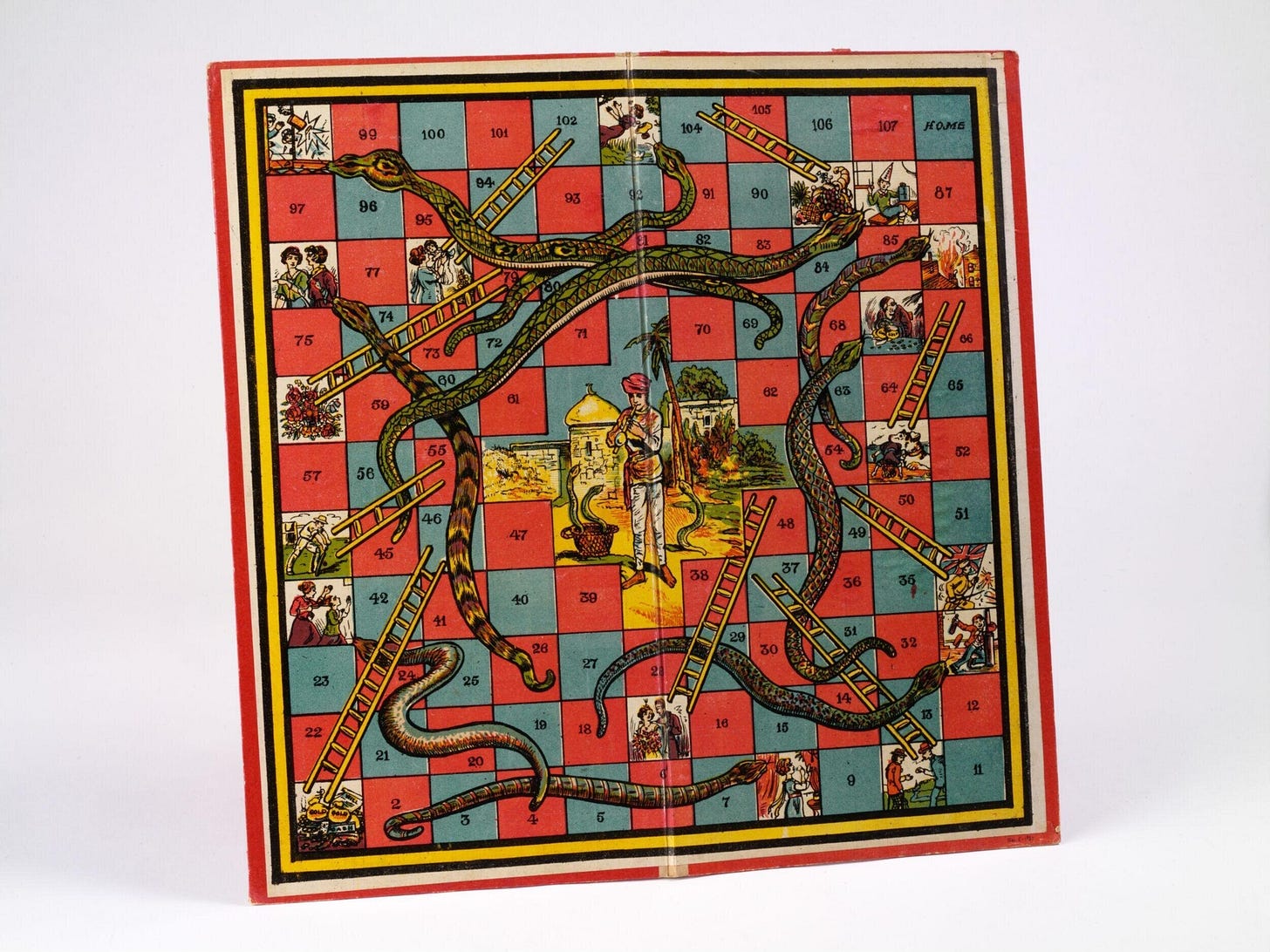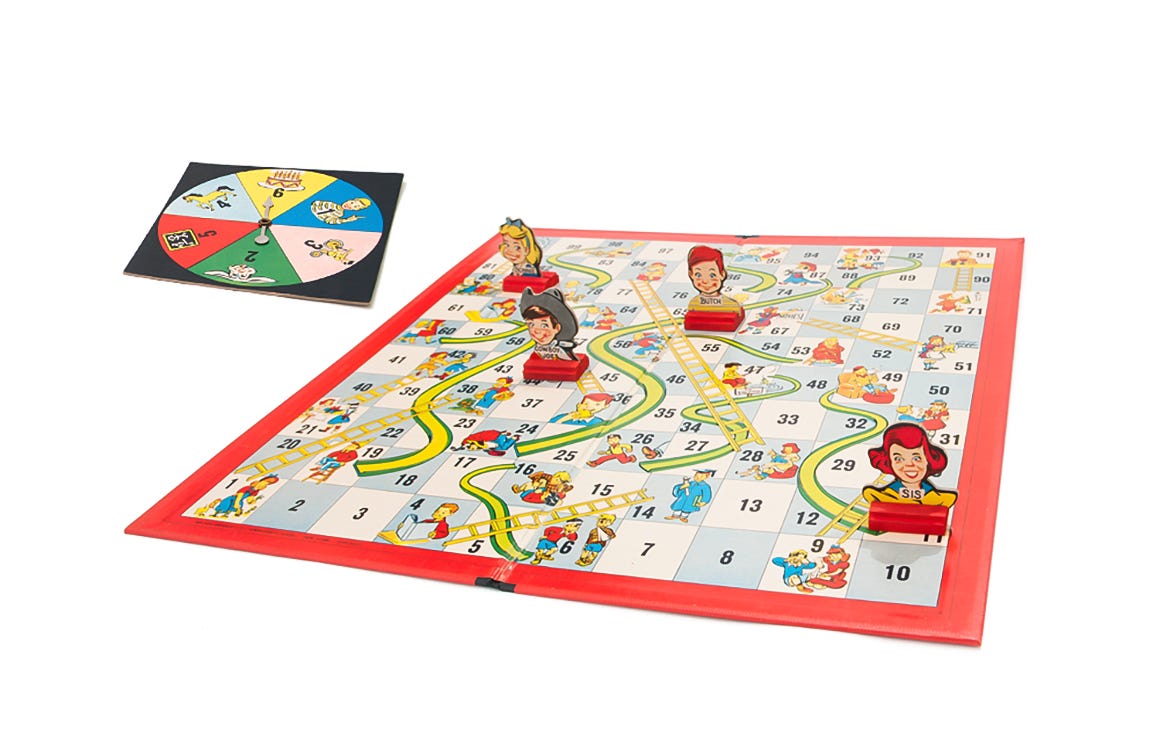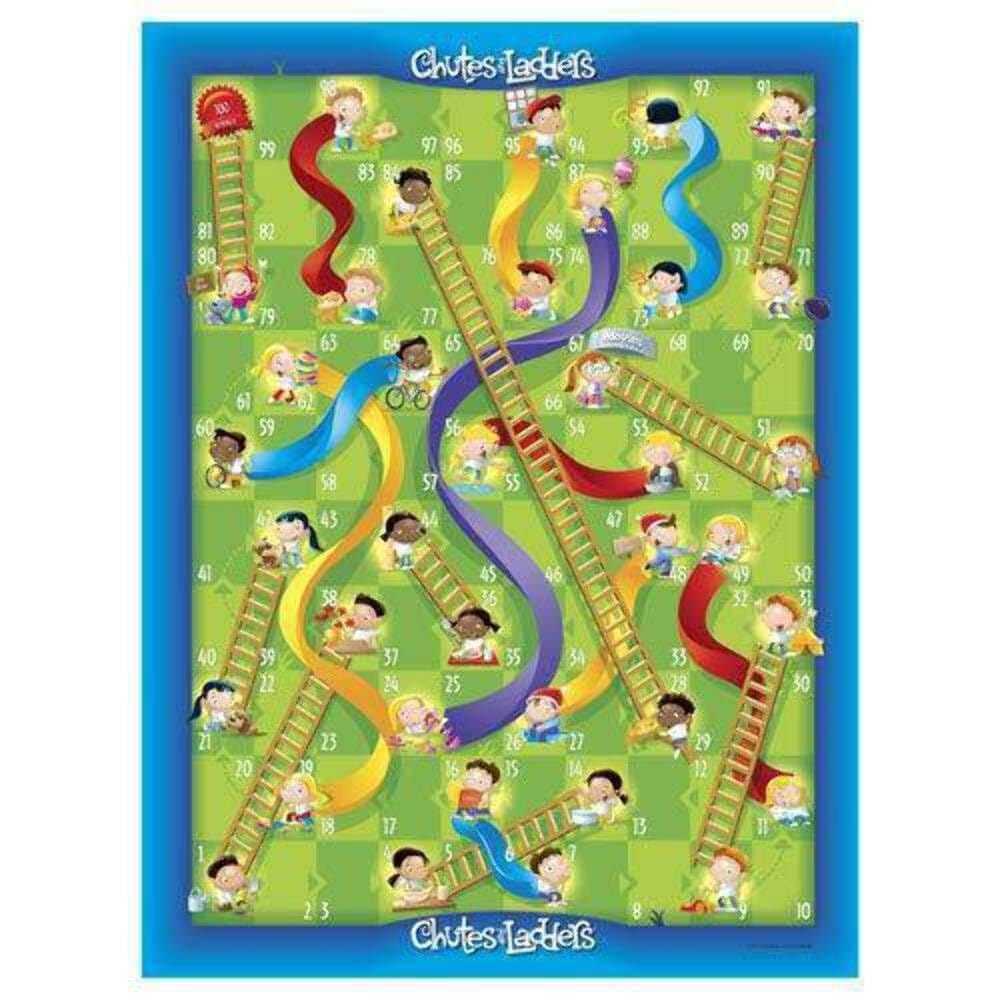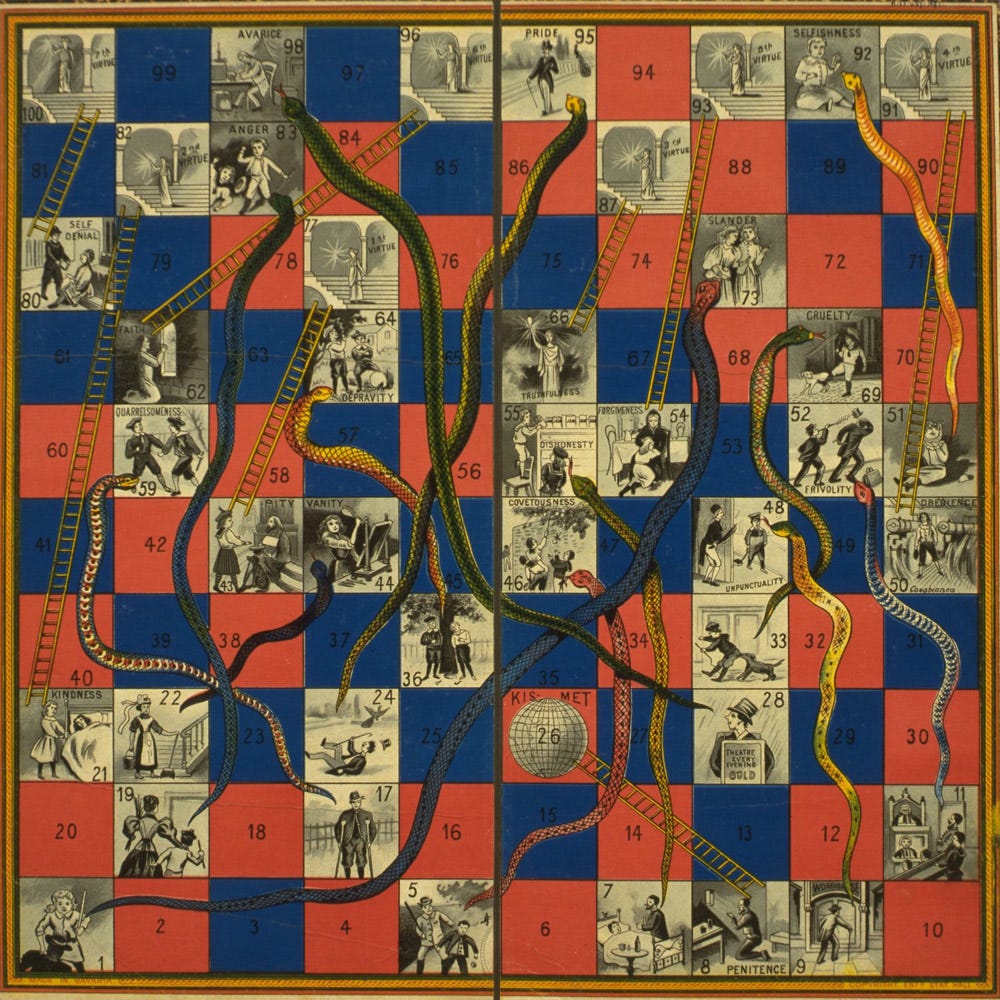Episode 2: Snakes and Ladders
Show Notes
Snakes and Ladders is familiar to Western audiences as a simple childhood game. But it has its origins in India, where it developed as an educational allegory rooted in Hindu moral philosophy. We'll break the game down and look into how all the elements of its design -- particularly its play and learning mechanics -- work together to impart the lesson it's trying to teach.
Notes & Resources
Snakes and Ladders Boards



Games as a System
In this episode, I mention my approach to thinking about games as a system of interconnected elements, all of which work together to create a fun, challenging experience for the player. I think of game systems as having six elements:
Goals — The positive outcome(s) a player is trying to achieve. Usually defined in terms of a ‘win condition,’ but sometimes it just means avoiding a loss (as in Tetris).
Rules — The things that are and are not permitted of players that structure the play experience. Includes a game’s “official” rules (like rolling a six grants a bonus roll in Snakes and Ladders), but also underlying rules like gravity in real-world sports or videogames involving physics. Can also include behavioral norms, for example sportsmanship in athletic competitions.
Challenge — The things that make it non-trivial (and therefore enjoyable) for the player to achieve the goals.
Space — The area of the real world — or a virtual space — where the game’s rules apply.
Components — The things that are part of the game, like the game board, dice, game pieces and the players themselves in Snakes and Ladders. The “nouns” of the game.
Mechanics — The things a player does in a game. If something is a mechanic, you should be able to represent it with an active verb, as in “running,” “jumping,” “sneaking” or “solving a puzzle.” I (and many game designers) consider mechanics to the “crown of the elements,” since games are an interactive medium and it’s actions that define the player’s experience. Most games have one (or a small number) of key mechanic(s) that give the game its identity, known as the core mechanic(s).
Gamestar Mechanic
Gamestar Mechanic was the first commercial (and educational) game I worked on. Coming out of academic research, it was designed to teach kids how to design games using a system’s thinking approach. The game features a narrative-driven learning quest, an embeded creation tool and a YouTube-like community where players could share, play and give feedback on user-created games. It was even the subject of two PhD dissertations during its R&D phase.



